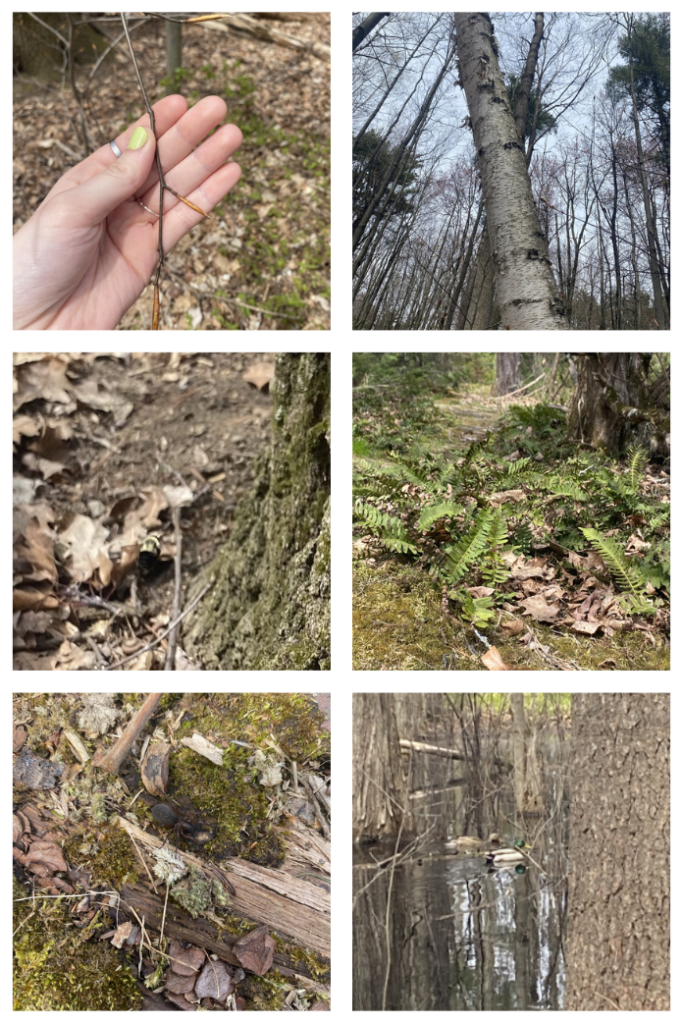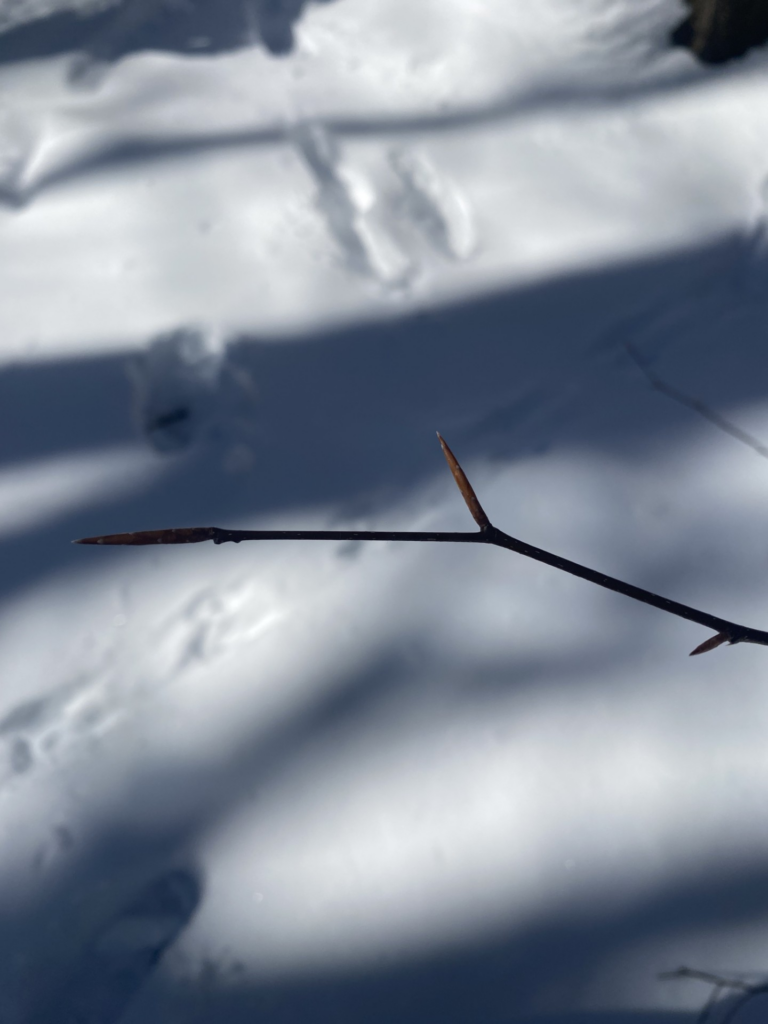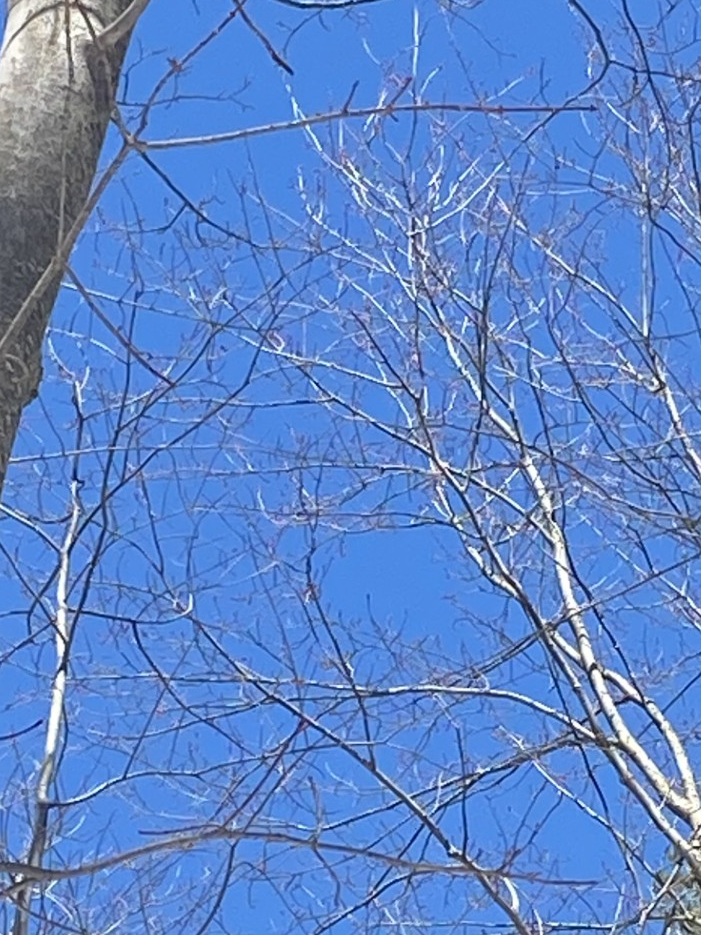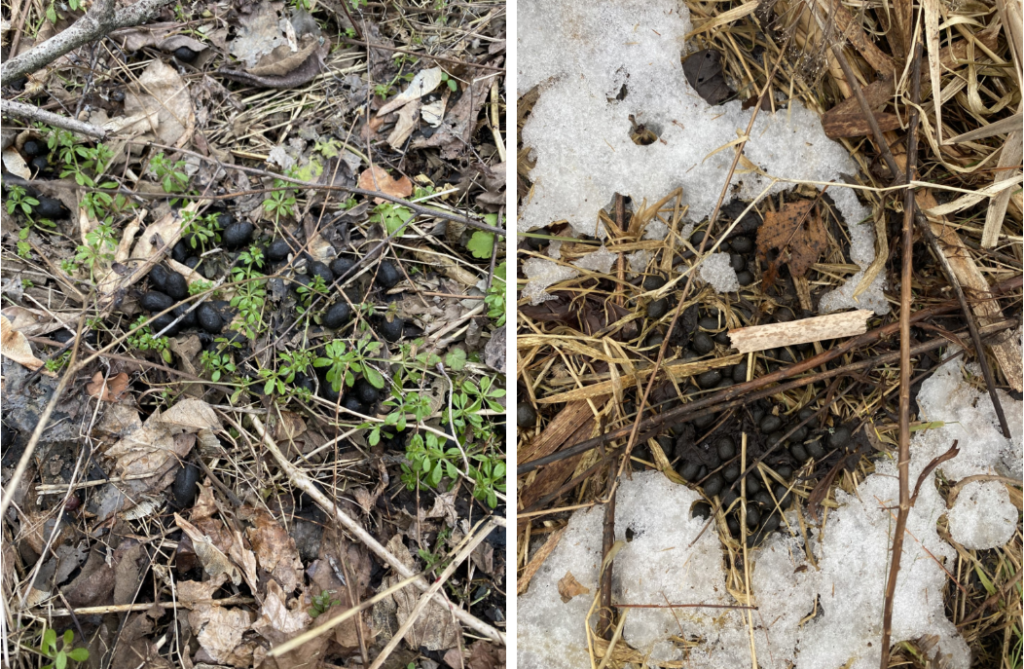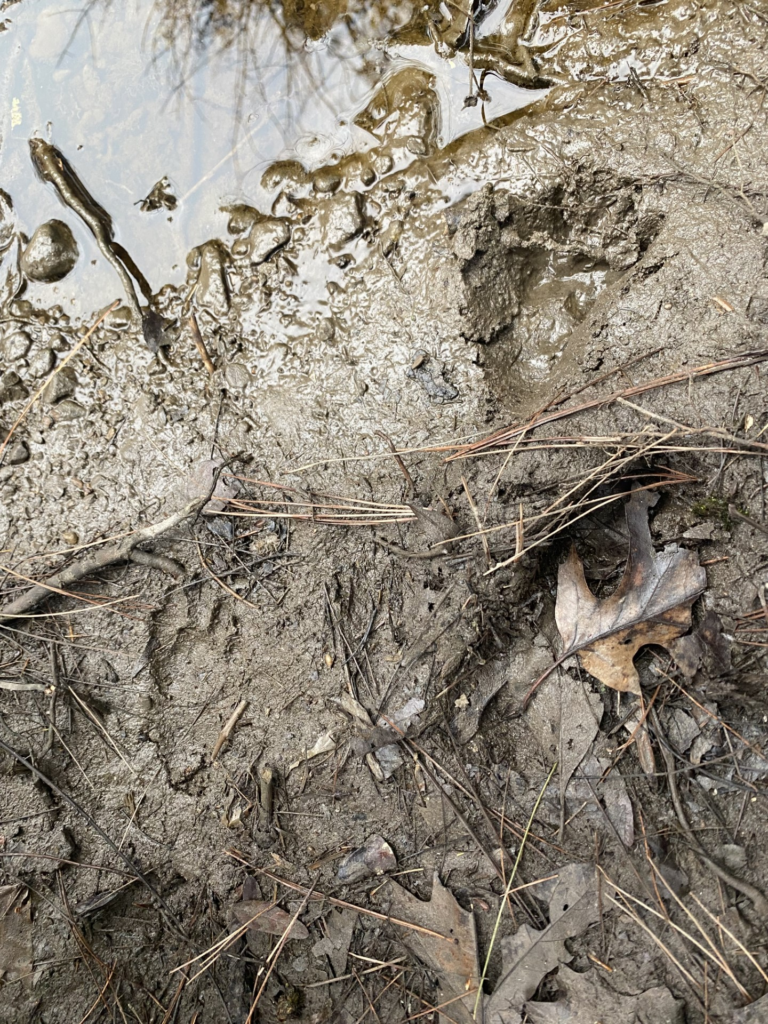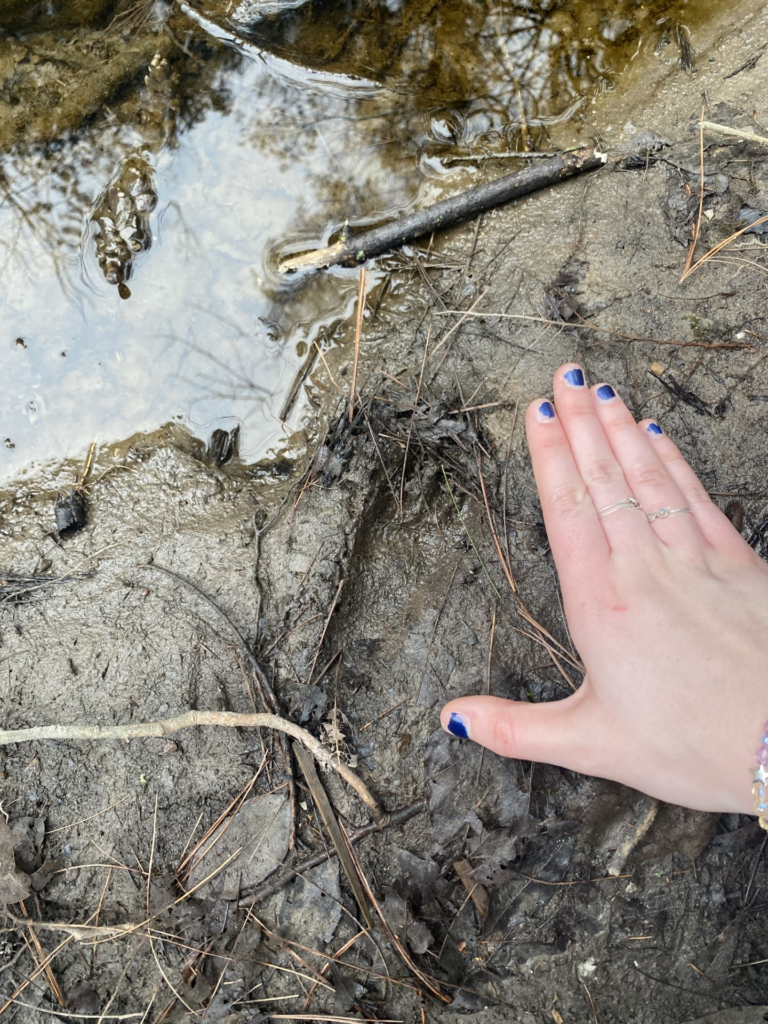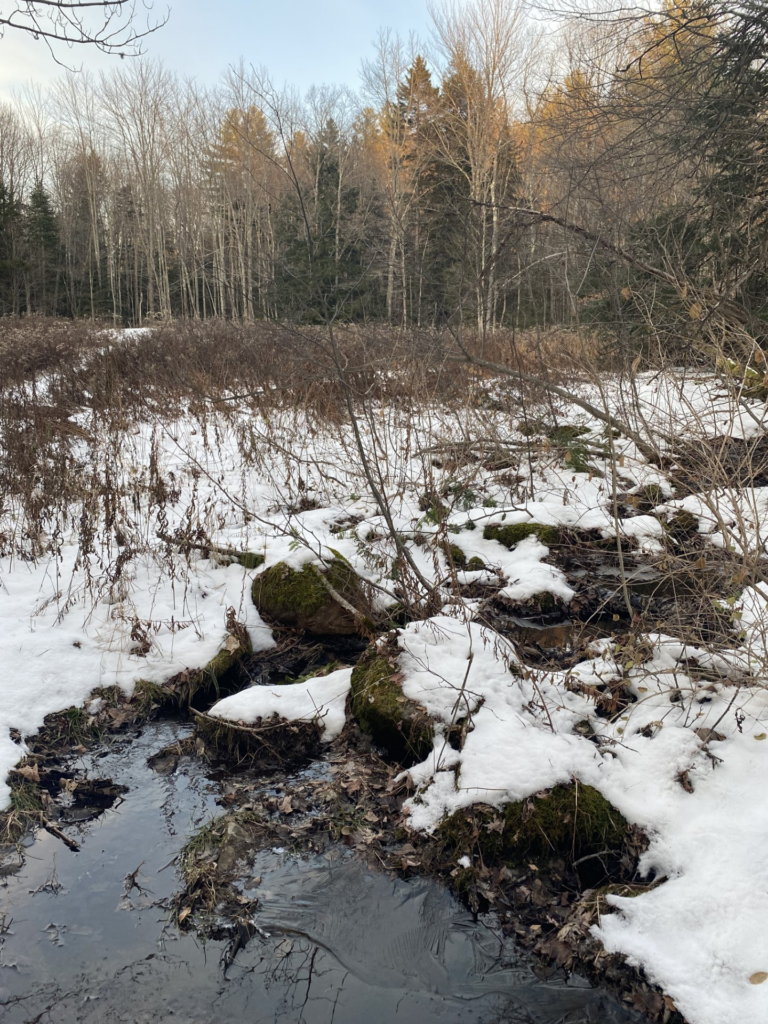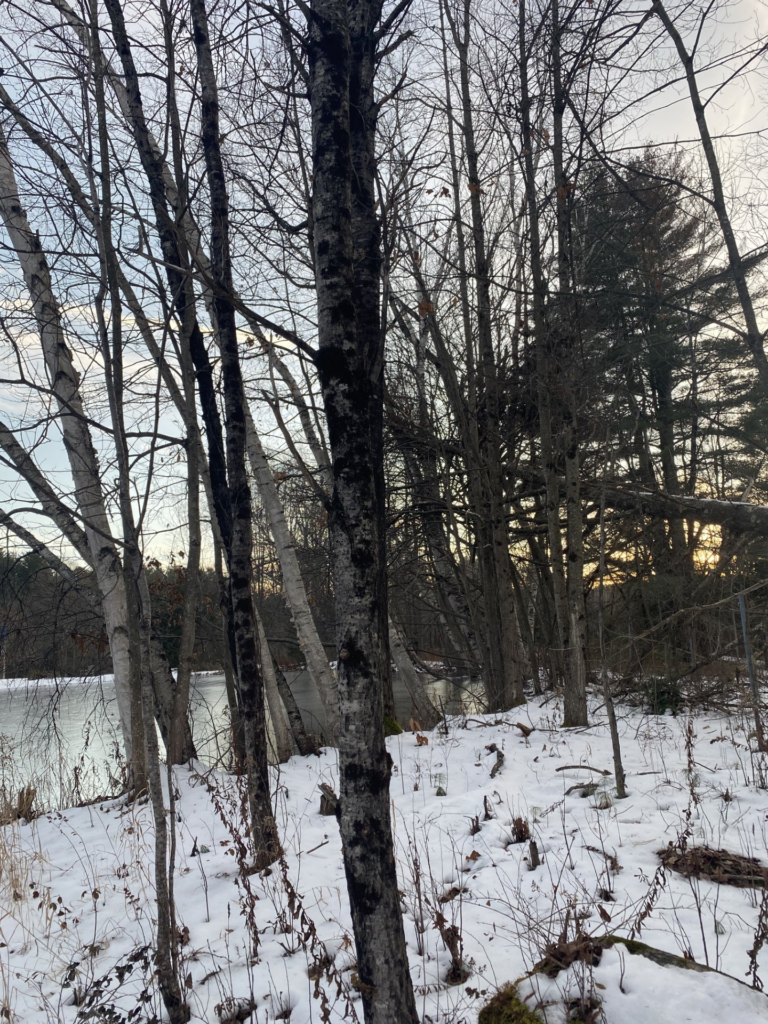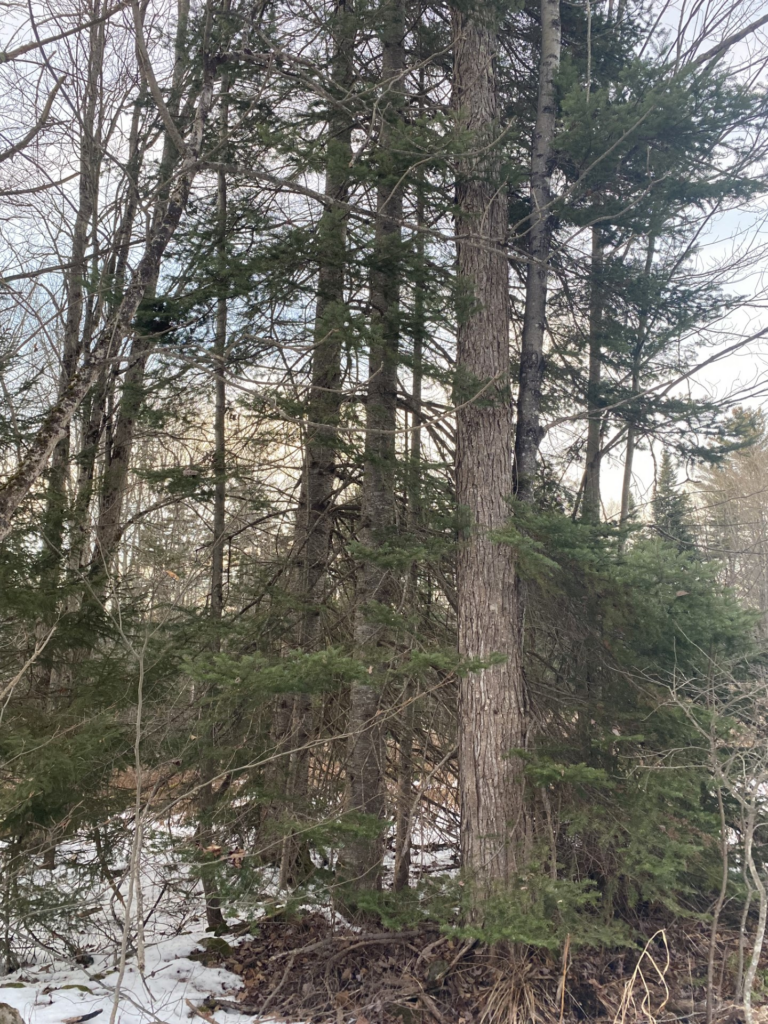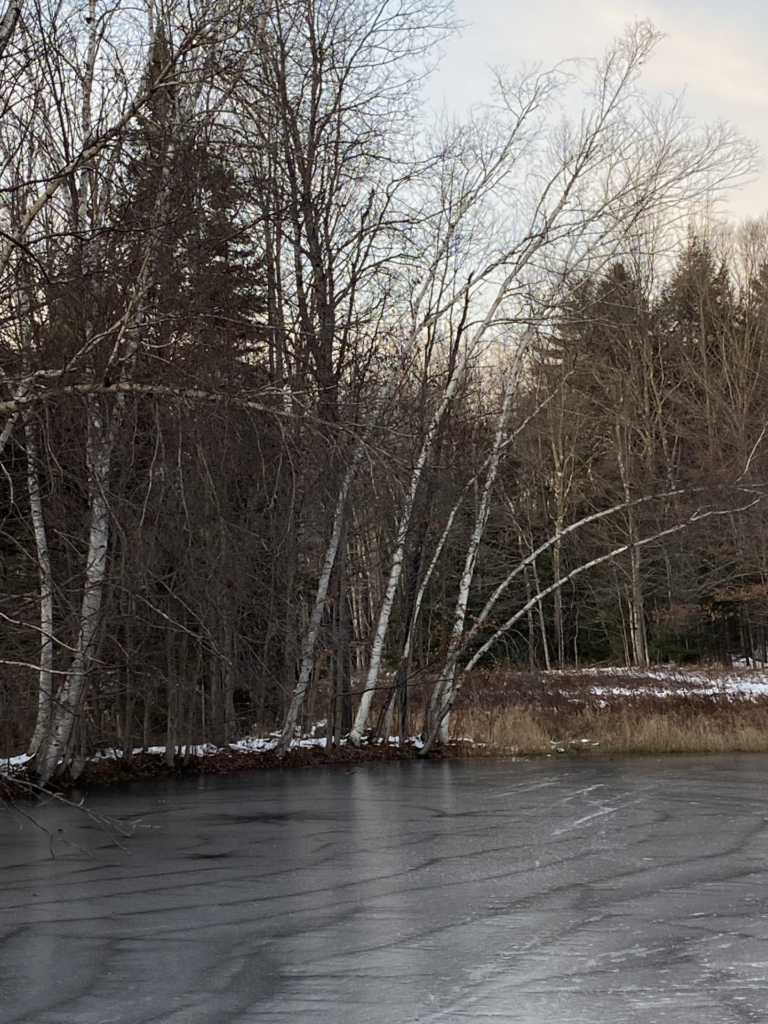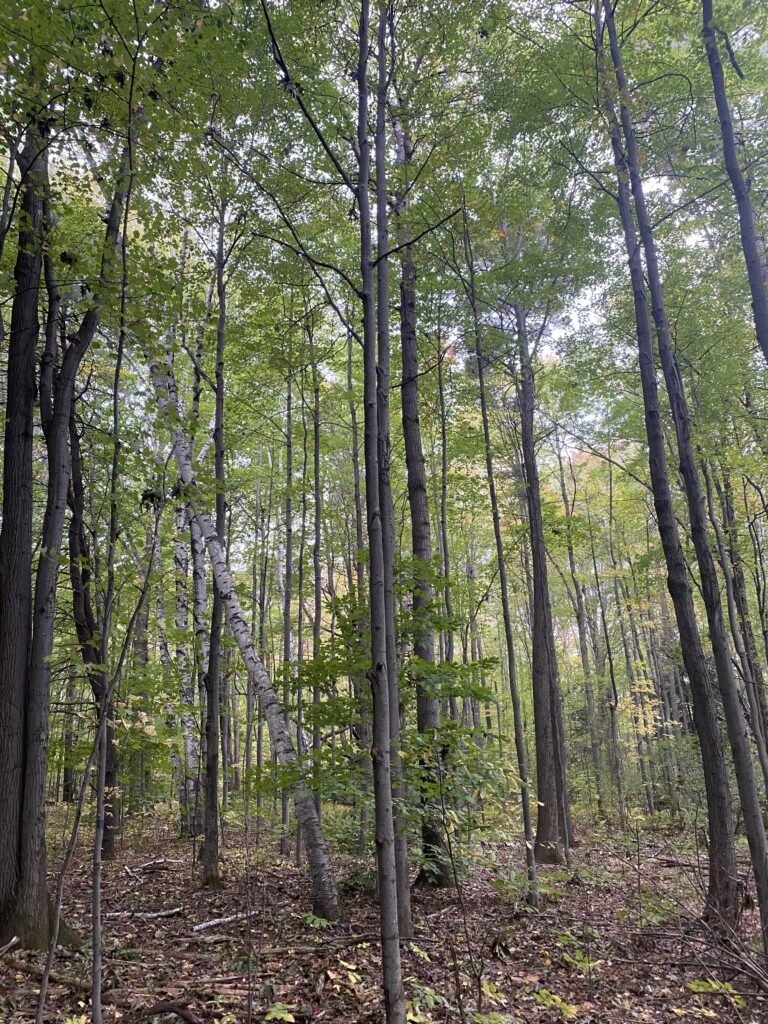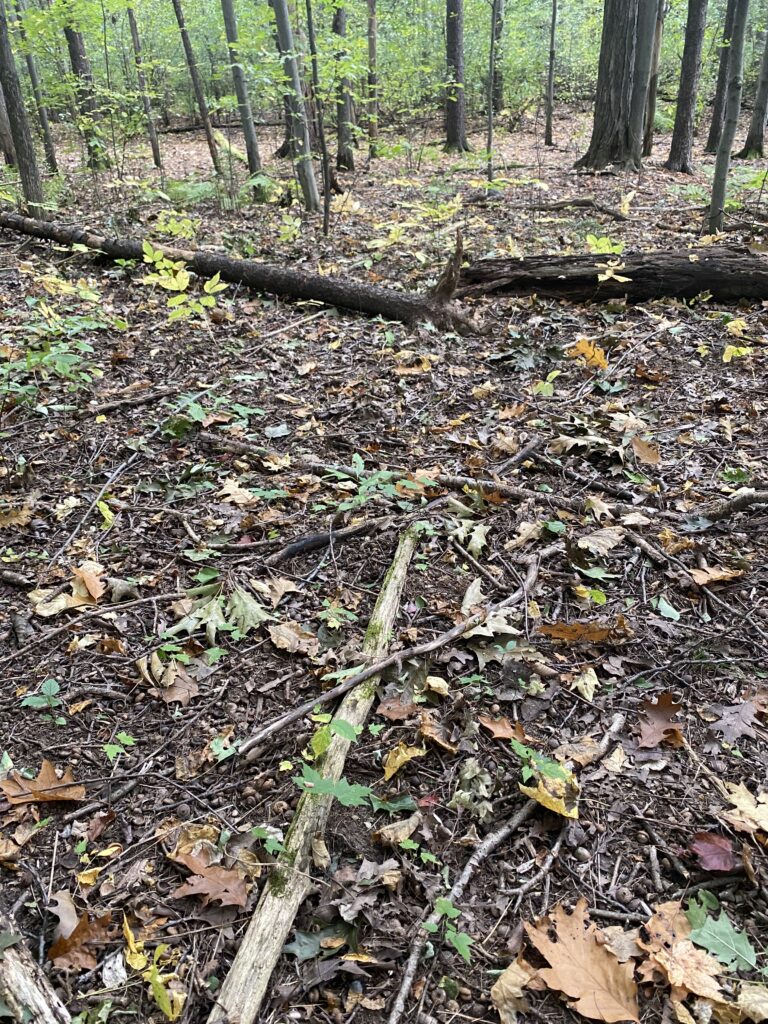On Saturday, I made my last visit to Red Rocks Park for this phenology blog. It was a warm and sunny day so I was motivated to be the most observant of phenological changes in my spot thus far, and rightly so because there were some big ones. Firstly, all of the snow had melted and seemingly pooled up more to form an even larger pond a mere 20 feet away from my sit spot. Not only did it make for a nice little water feature in the spot, but it also provided a habitat for Mallards that swam as I was there! A very exciting phenological update since it was the first up close sighting of wildlife other than squirrels this year. After the Mallard sighting I then heard a bumble bee buzzing around me and was able to snap a photo (both species were recorded in iNaturalist for the City Nature Challenge, as mentioned in the previous post). The presence of bees made me really start to see the onset of spring conditions. Speaking of spring conditions, the swelling buds on the maple tree became very noticeable. Another change I noted was that the fallen trees have become more decayed. Now that the snow was gone and the ground was dry, I returned to sitting on the fallen log in between the two Northern Red Oaks that mark my spot. Only this time I noticed that they were more decayed than when I sat on them in the fall. The bird song picked up even more than last visit, as well.
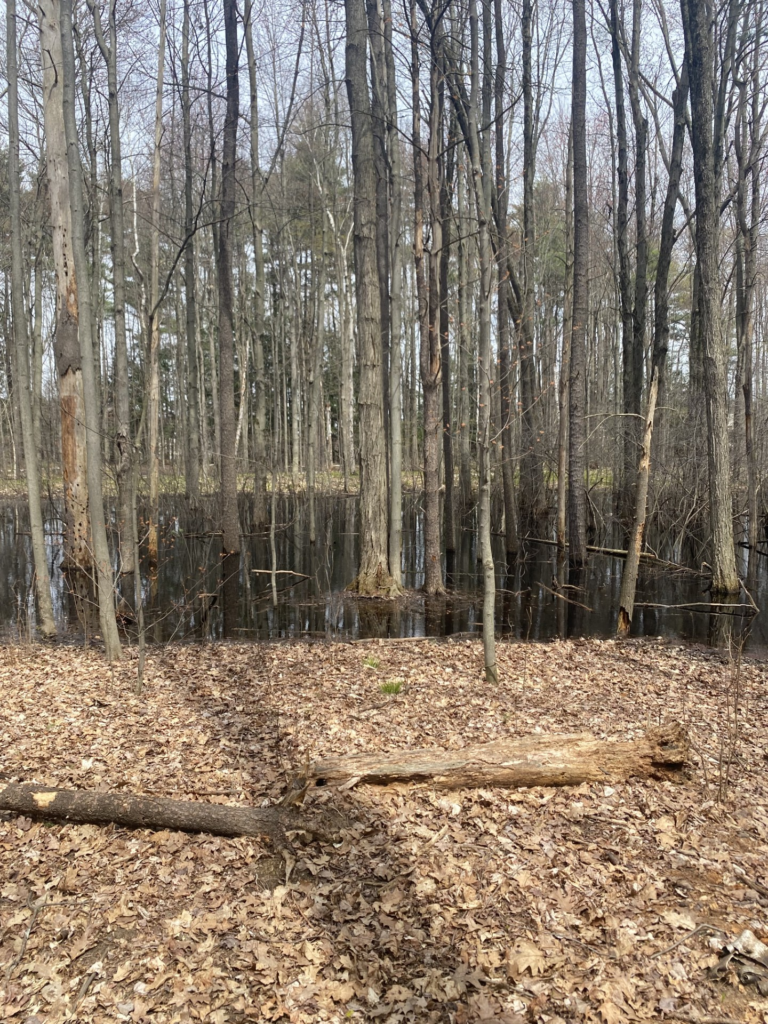
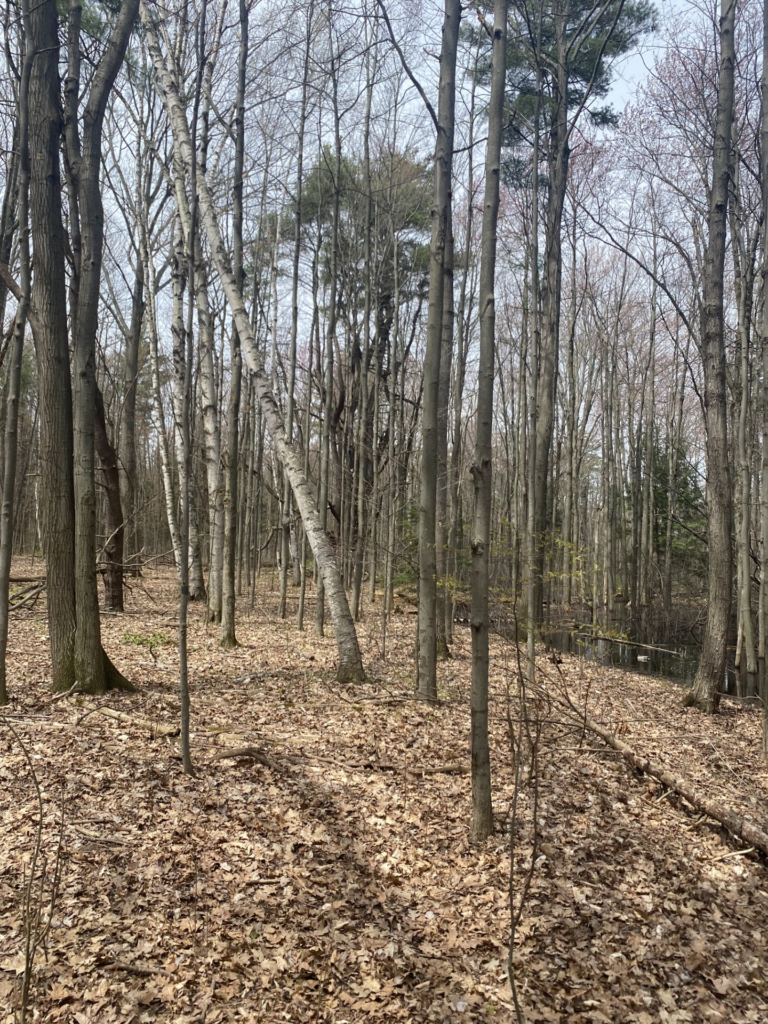
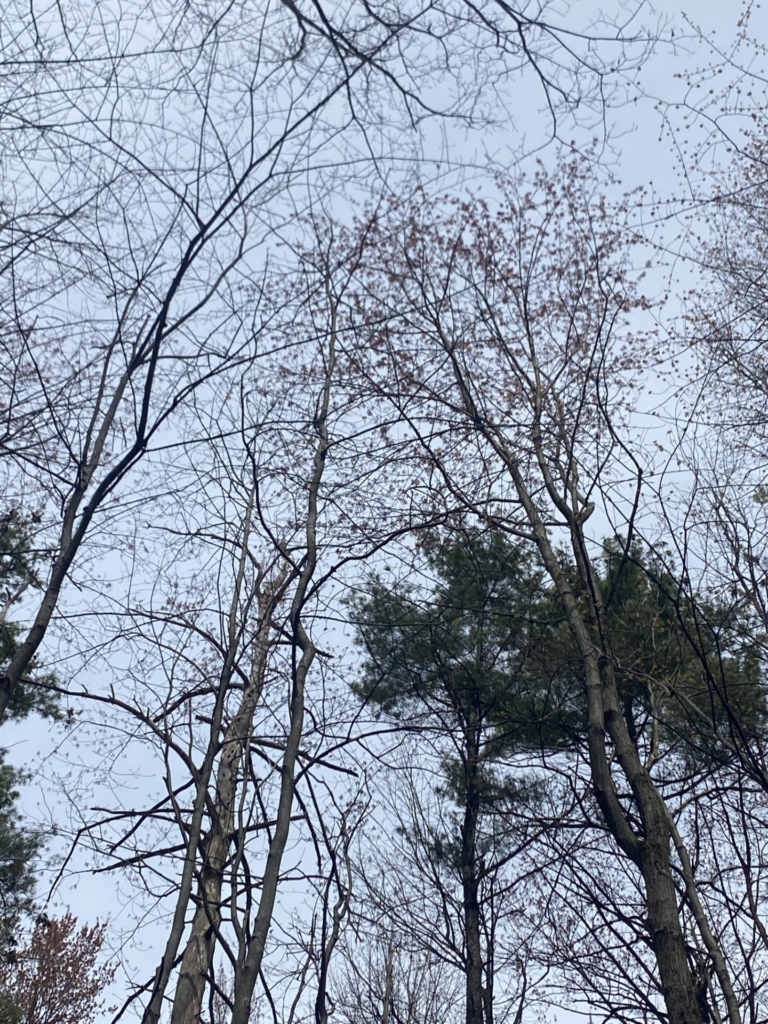
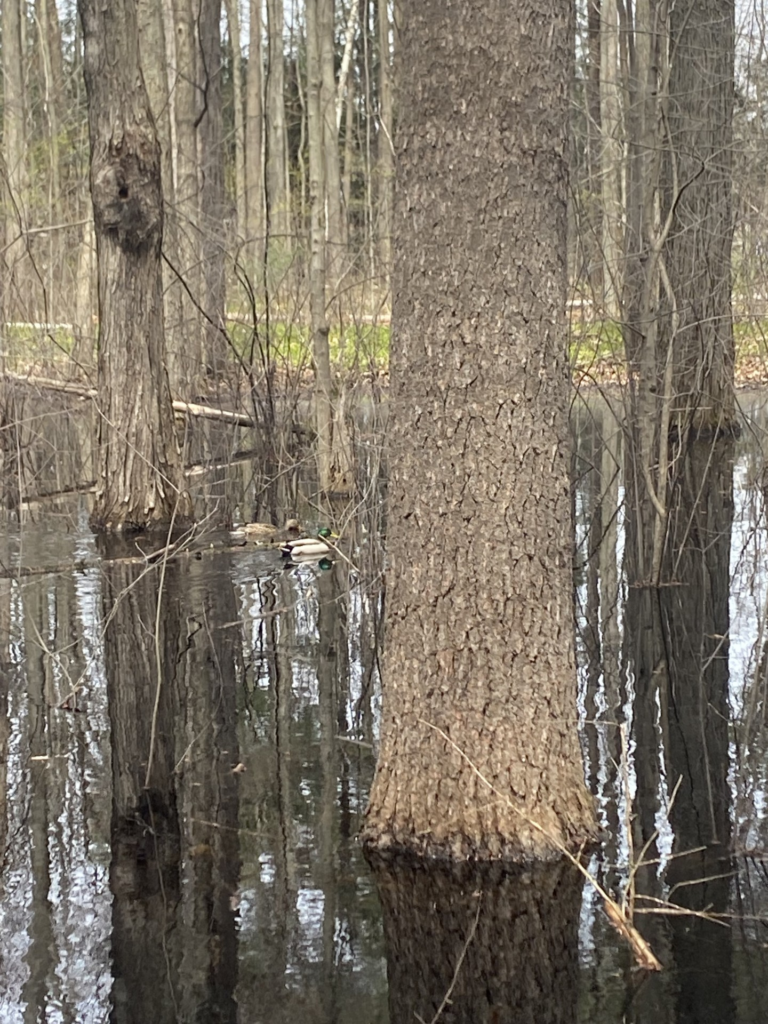


I have really enjoyed visiting Red Rocks Park throughout the year and looked forward to all the days I got to visit. It has been very exciting to observe the spot change with the seasons and learn about these processes. I have become familiar with my spot and certain landmarks define this for me. Most notably, the two large Northern Red Oak trees with the fallen log in between that I sat on. I am familiar with the paper birch trees to the left of this sit spot as well as the small American Beech to the right of me. Through this gained familiarity, I have begun to consider myself a small part of this place. After watching the same small area change over the year and understand what is happening, I feel more connected to it. I left the spot entirely as I found it so I feel like a small, inconsequential piece in it’s large history. This understanding has also led me to think about the connection between nature and culture at Red Rocks Park. Here is a place for people to escape the constant commotion of downtown Burlington and experience nature as well as a piece of Lake Champlain. I think people, including myself, use this place as a way to connect with nature. Overall, Red Rocks Park has been a great place to return to every few weeks and I will miss the excuse to visit it regularly. I will be returning next year and checking in on my phenology spot seeing as the cycle repeats itself.
